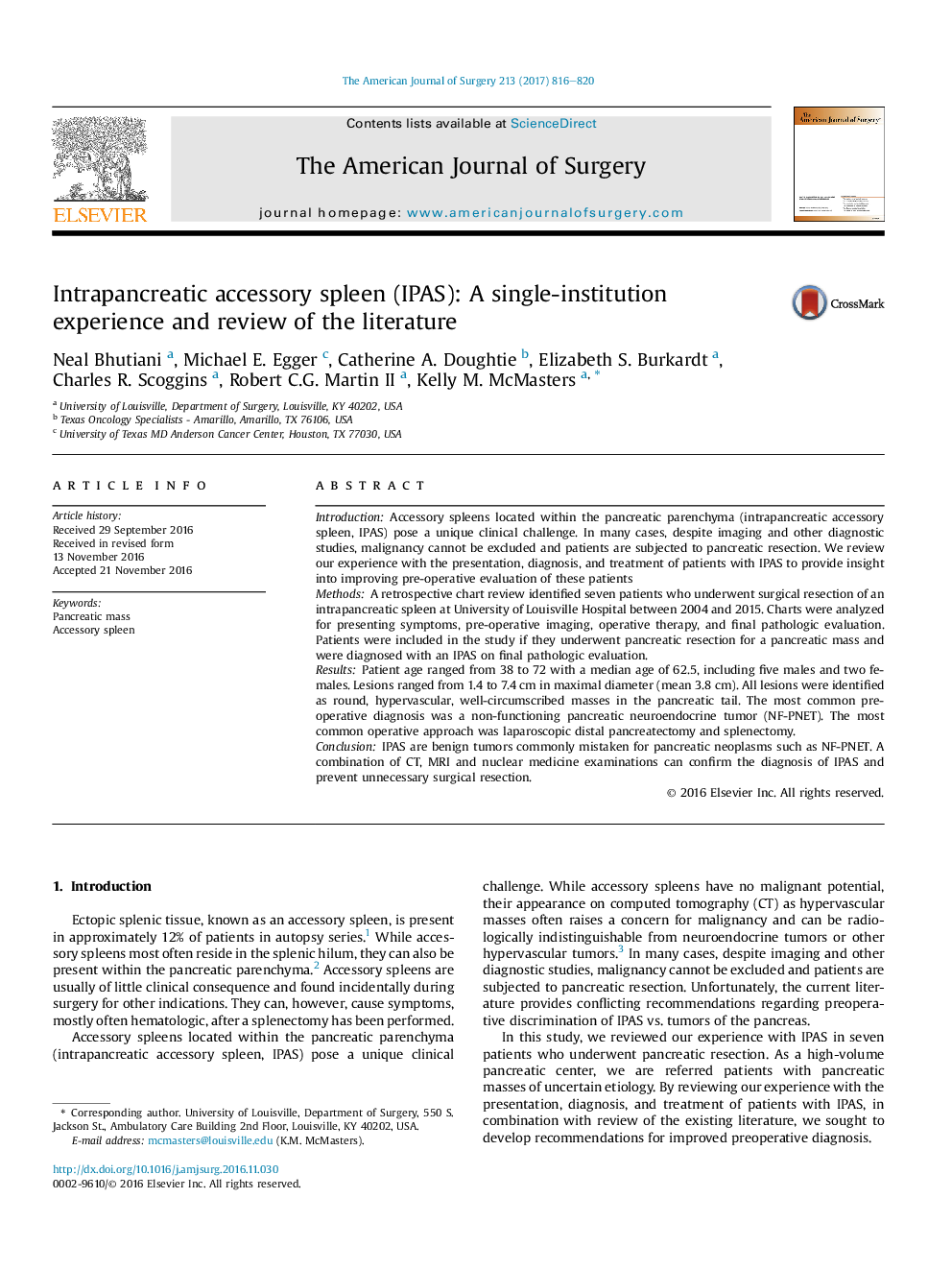| کد مقاله | کد نشریه | سال انتشار | مقاله انگلیسی | نسخه تمام متن |
|---|---|---|---|---|
| 5731319 | 1611472 | 2017 | 5 صفحه PDF | دانلود رایگان |

- IPAS may be discovered incidentally or during workup for abdominal pain.
- IPAS is often mistaken for pancreatic neoplasms, such as NF-PNET.
- Lesions are often hypervascular, well-circumscribed pancreatic tail masses.
- A combination of CT, MRI, and nuclear medicine tests can help confirm diagnosis.
IntroductionAccessory spleens located within the pancreatic parenchyma (intrapancreatic accessory spleen, IPAS) pose a unique clinical challenge. In many cases, despite imaging and other diagnostic studies, malignancy cannot be excluded and patients are subjected to pancreatic resection. We review our experience with the presentation, diagnosis, and treatment of patients with IPAS to provide insight into improving pre-operative evaluation of these patientsMethodsA retrospective chart review identified seven patients who underwent surgical resection of an intrapancreatic spleen at University of Louisville Hospital between 2004 and 2015. Charts were analyzed for presenting symptoms, pre-operative imaging, operative therapy, and final pathologic evaluation. Patients were included in the study if they underwent pancreatic resection for a pancreatic mass and were diagnosed with an IPAS on final pathologic evaluation.ResultsPatient age ranged from 38 to 72 with a median age of 62.5, including five males and two females. Lesions ranged from 1.4 to 7.4Â cm in maximal diameter (mean 3.8Â cm). All lesions were identified as round, hypervascular, well-circumscribed masses in the pancreatic tail. The most common pre-operative diagnosis was a non-functioning pancreatic neuroendocrine tumor (NF-PNET). The most common operative approach was laparoscopic distal pancreatectomy and splenectomy.ConclusionIPAS are benign tumors commonly mistaken for pancreatic neoplasms such as NF-PNET. A combination of CT, MRI and nuclear medicine examinations can confirm the diagnosis of IPAS and prevent unnecessary surgical resection.
Journal: The American Journal of Surgery - Volume 213, Issue 4, April 2017, Pages 816-820